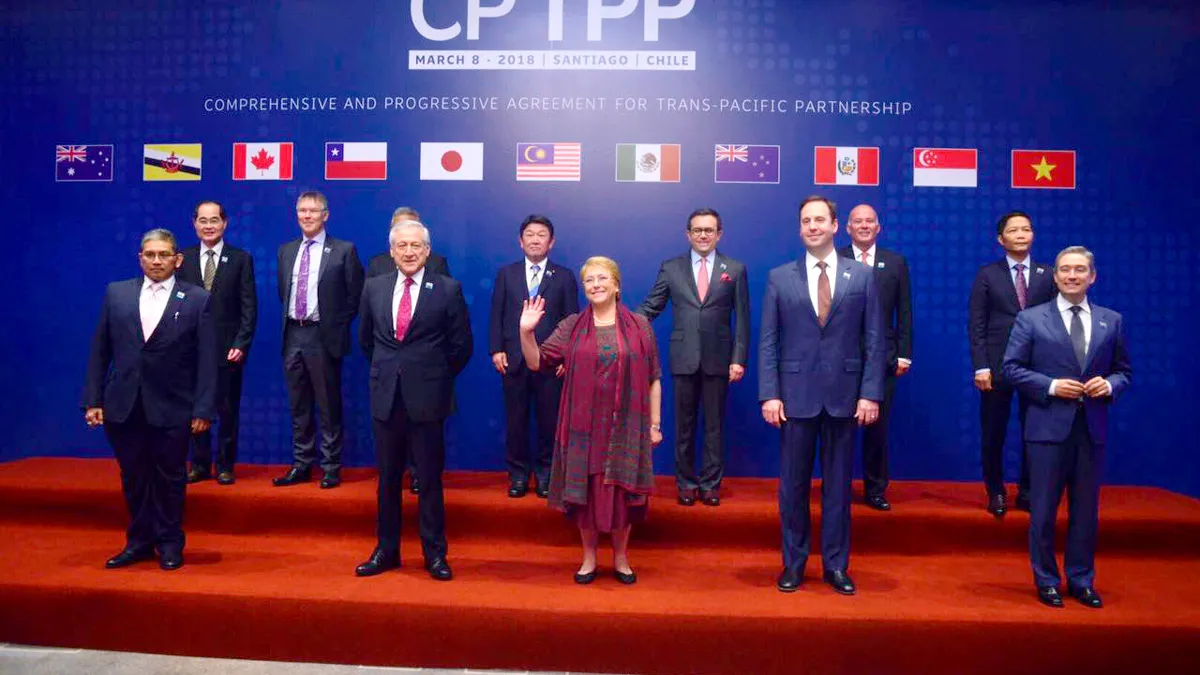Dive Brief:
- Six Pacific nations welcomed in revised trade rules on Dec. 30, as the Comprehensive and Progressive Agreement for Trans-Pacific Partnership (CPTPP) entered force.
- The trade deal's start brought with it a slew of tariff cuts among the six currently participating nations of Australia, Canada, Japan, Mexico, New Zealand and Singapore. The countries enacted 90% of planned tariff cuts on day one, according to an analysis by HSBC.
- The deal includes five other nations. Vietnam is expected to enact the trade deal on Jan. 14, 2019. Brunei, Chile, Malaysia and Peru must still domestically ratify the deal before it takes effect in those countries. Altogether, the 11 states represent 13% of the world's gross domestic product, Reuters reports.
Dive Insight:
With a trade war between the U.S. and China ongoing, a new North American trade deal awaiting ratification and various bilateral deals on the global trade horizon, the CPTPP may be the first wave of a storm set to hit sourcing networks in 2019.
The deal affects more than $13 trillion dollars of global GDP, 11 countries and 500 million people, according to the Government of Canada.
The trade deal forces pricing shifts on a number of industries, as new markets open up in some countries and tighten in others. A few examples:
- Japan's auto industry may benefit from Canada's pledge to eliminate its tariffs on imported passenger cars within five years, but its farmers worry cheaper agricultural imports from New Zealand and Australia could harm the domestic market, according to the Japan Times.
- Mexico will open its market to fish and fish products from abroad. In the past, the country had a 20% tariff on such products but will eliminate those completely over time. A similar story applies to products like kiwifruit, avocados and wine, according to the New Zealand Government.
- Vietnam and Peru stand to gain the most from the deal, according to Quartz. The U.S. stands to lose about $2 billion in income, as products like wheat and beef become more expensive to export from the U.S., according to analyses by the Peterson Institute for International Economics and Australia's SBS news.
The examples above scratch the surface of a broad shift in the rules that affect at least 15 different economic sectors, according to Canada's CPTPP website, and may alter where companies choose to procure their raw materials or place new facilities.
In a tweet, the English-language branch of a Chinese news agency reported the deal's entry into force could draw businesses away from China as manufacturers map a new supply chain.
China may find itself at a disadvantage as #CPTPP may drive some companies to withdraw from China and form a new manufacturing layout within the CPTPP framework, said Chen Youjun, a senior research fellow with the Shanghai Institutes for International Studies, on Tuesday. pic.twitter.com/aAx4krtSo9
— Global Times (@globaltimesnews) January 1, 2019














